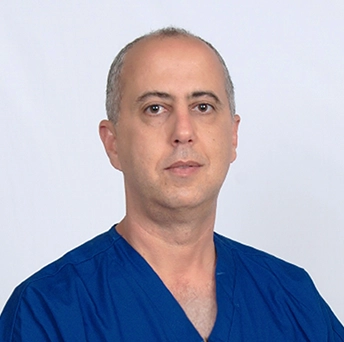How to Avoid Overfilling Lips – Expert Filler Technique Advice
What Are Overfilled Lips? Understanding the Risks
Overfilled lips occur when excessive amounts of dermal filler are injected, causing an unnatural, exaggerated look. This article is about filler technique advices to avoid overfilling lips.
Overfilled lips can lead to issues like duck lips, where the upper lip protrudes unnaturally, or trout pout, which results in excessive volume across both lips. These unnatural appearances often happen when too much filler is used or placed incorrectly.
One primary concern with overfilling lips is filler migration, where the product moves beyond the intended injection site, distorting the lip shape. Overfilled lips with migration can create a swollen, uneven look that is difficult to reverse.
The skin may also stretch over time, leading to long-term aesthetic issues.
Understanding the risks of overfilling lips is crucial for both patients and injectors. Choosing an experienced injector and using a conservative approach can help prevent filler mistakes that may require correction later.
Table of Contents
1. Common Causes of Overfilling Lips
2. The Science Behind Lip Filler Migration
3. Duck Lips vs. Trout Pout – How to Avoid Both
4. Overfilled Vertical Lip Lines – What You Need to Know
5. The Role of Product Choice – Are Some Fillers More Prone to Overfilling?
6. Why Overdrawing Can Lead to Overfilled Lips with Migration
7. How to Prevent Overfilling Lips – Best Practices for Injectors and Patients
8. Signs That Your Lips Have Been Overfilled
9. Potential Consequences of Overfilled Lips – Health and Aesthetic Concerns
10. How to Correct Overfilled Lips – Dissolving and Reversing Filler Mistakes
11. How Long Does It Take for Overfilled Lips to Go Back to Normal?
12. Overfilled Face: Can Too Much Lip Filler Change Your Entire Look?
13. Best Filler Choices to Prevent Overfilling and Migration
14. Final Thoughts – Achieving Naturally Enhanced Lips
15. Frequently Asked Questions (FAQs)
16. Conclusion
17. References
1. Common Causes of Overfilling Lips
One of the biggest causes of overfilling lips is an excessive amount of filler being injected at one time.
Lips have a natural limit to how much volume they can hold without looking distorted. When too much product is placed too quickly, the lips swell disproportionately.
Another common issue is repeated filler treatments without proper dissolving between sessions. Some patients stack new filler on top of existing products, leading to overfilled lips that look puffy and unnatural.
Overfilled vertical lip lines can also result from excessive injections, making the lips appear stiff and overdone.
Finally, incorrect injection techniques can contribute to overfilling. Poor placement of the filler, particularly too much in the middle of the lip or the vermillion border, can create an unnatural bulging effect.
Injectors should carefully assess the patient’s natural lip structure before treatment.
2. The Science Behind Lip Filler Migration
Lip filler migration occurs when the injected product moves beyond the intended area, causing lips to look swollen or misshapen.
This often happens when too much filler is injected or placed too superficially. Overfilled lips with migration can create an unnatural puffiness above the lips, blurring the border between the lip and the surrounding skin.
Some fillers are more prone to migration than others. For example, lips overfilled with Restylane may experience migration if the product is not placed correctly.
Hyaluronic acid fillers with a softer consistency can sometimes shift from their original placement.
To avoid migration, injectors should use proper technique, placing the filler at the correct depth and avoiding excessive amounts in a single session. Patients should also follow post-care instructions, such as avoiding excessive pressure on the lips immediately after treatment.
3. Duck Lips vs. Trout Pout – How to Avoid Both
Duck lips occur when too much filler is placed in the central upper lip, causing it to protrude excessively.
This results in an unnatural beak-like appearance. On the other hand, trout pout happens when too much filler is injected into both lips, creating an overly swollen and exaggerated look.
To avoid duck lips, injectors should maintain a natural lip ratio. The upper lip should be smaller than the lower lip for a balanced appearance.
Proper injection techniques, such as avoiding excessive filler along the vermillion border, can also prevent unnatural protrusion.
Preventing trout pout requires moderation in both upper and lower lip injections. A skilled injector will enhance volume gradually, rather than injecting large amounts in a single session.
This approach helps maintain natural movement and shape.
4. Overfilled Vertical Lip Lines – What You Need to Know
Overfilled vertical lip lines occur when too much filler is placed in an attempt to smooth out fine lines around the mouth. Instead of softening wrinkles, this can create a bulky, stiff appearance.
The best way to avoid overfilled vertical lip lines is to use a small amount of filler in combination with other treatments, such as Botox or microneedling. This allows for a more natural improvement in lip texture without adding excess volume.
If vertical lines become overfilled, they can be dissolved with hyaluronidase to restore a more natural look. Proper technique and product selection are essential to prevent this issue.
5. The Role of Product Choice – Are Some Fillers More Prone to Overfilling?
Different lip fillers have varying levels of thickness and longevity.
Some fillers, like Restylane Kysse and Juvederm Volbella, are designed for a softer, more natural enhancement. Others, like Juvederm Ultra, are thicker and can lead to overfilled lips if too much is used.
Choosing the right filler depends on the desired result and the patient’s natural lip structure. Softer fillers are ideal for subtle volume, while thicker fillers should be used conservatively to avoid overfilling lips.
A skilled injector will tailor the product choice based on individual needs. Patients should also communicate their goals clearly and opt for gradual enhancements instead of dramatic changes in one session.
6. Why Overdrawing Can Lead to Overfilled Lips with Migration
Overdrawing the lips—using excessive filler to create an exaggerated shape—can contribute to lip filler migration.
When too much product is placed near the vermillion border (the edge of the lips), it can spread into the surrounding skin, leading to an unnatural, puffy appearance. This is how lips overfilled with Restylane, or other hyaluronic acid fillers can develop migration issues over time.
Another problem with overdrawing is that it stretches the skin around the lips. This can cause long-term damage, making the lips look deflated and wrinkled once the filler dissolves.
Patients who frequently overfill their lips may experience permanent changes to their lip shape, leading to the need for corrective treatments.
To prevent overdrawing, injectors should follow the natural lip structure rather than artificially inflating the lips. A well-balanced approach ensures that enhancements remain subtle and proportional to the face.
7. How to Prevent Overfilling Lips – Best Practices for Injectors and Patients
Preventing overfilling lips starts with choosing an experienced injector who understands facial proportions and filler techniques. A skilled professional will assess the patient’s natural lip shape and recommend an appropriate filler to enhance the lips without creating an overdone look.
Patients should also take a gradual approach to lip augmentation. Instead of adding enormous filler in one session, spacing out treatments over time allows the lips to adjust naturally.
This reduces the risk of overfilled lips and migration.
Lastly, selecting the right filler plays a crucial role in preventing overfilling. Thicker fillers should be used sparingly, while softer, more flexible fillers are ideal for natural-looking results.
Patients should also avoid frequent touch-ups without entirely dissolving old filler to maintain a fresh, balanced appearance.
8. Signs That Your Lips Have Been Overfilled
Recognizing overfilled lips early can help prevent long-term damage. Some common signs include an unnatural lip shape, where the upper lip appears excessively puffy or protruding too far forward, commonly called duck lips.
Another sign of overfilled lips is stiffness or lack of natural movement. If the lips feel hard to the touch or do not move normally when speaking or smiling, too much filler may have been used.
Overfilled vertical lip lines can also occur, making the lips look rigid instead of smooth and soft.
Finally, visible lumps, uneven swelling, or a swollen area above the upper lip indicate that the filler has migrated beyond its intended placement. If any of these signs appear, seeking professional advice for correction is recommended.
9. Potential Consequences of Overfilled Lips – Health and Aesthetic Concerns
Overfilled lips don’t just affect aesthetics—they can also cause health concerns. Excessive filler can pressure blood vessels, leading to poor circulation and increasing the risk of vascular occlusion.
This condition can cause tissue damage and, in severe cases, require emergency treatment.
Aesthetic issues include stretching of the lip skin, which can lead to sagging once the filler dissolves. Patients with overfilled lips often experience lip shape distortion, making it difficult to restore their natural lip structure.
Psychologically, lip filler gone wrong can affect self-confidence. Many individuals who experience overfilling struggle with dissatisfaction and may need corrective procedures to regain a natural appearance. This is why choosing an experienced injector and using filler conservatively is so essential.
10. How to Correct Overfilled Lips – Dissolving and Reversing Filler Mistakes
If lips are overfilled, they can be corrected using hyaluronidase, an enzyme that dissolves hyaluronic acid-based fillers. This treatment can quickly break down excess product, allowing the lips to return to a more natural state.
For patients with long-term overfilling, dissolving the filler and waiting several months before reinjecting is recommended. This allows the lips to recover and regain their natural structure.
In severe cases where the skin has stretched significantly, additional treatments like microneedling or laser therapy may be needed to improve elasticity.
Patients should also avoid rushing into another filler session immediately after dissolving. Instead, working with a knowledgeable injector to rebuild volume slowly can help achieve a more balanced and natural look.
11. How Long Does It Take for Overfilled Lips to Go Back to Normal?
The recovery time for overfilled lips varies depending on the extent of overfilling and whether corrective treatments are used. If filler migration or excessive volume is mild, the body may naturally break down the product within 6-12 months.
For those who undergo hyaluronidase treatment to dissolve the filler, lips can return to their natural state within a few days to two weeks. However, if the skin has stretched due to long-term overfilling, full recovery may take several months.
Patience is key when correcting overfilled lips. Allowing the lips to heal before reinjecting ensures better results and prevents repeated overfilling. A gradual approach invariably leads to a more natural outcome.
12. Overfilled Face: Can Too Much Lip Filler Change Your Entire Look?
Excessive lip filler doesn’t just impact the lips—it can also alter overall facial proportions. When lips are overfilled, they can throw off the balance between the nose, chin, and cheeks, making the entire face look disproportionate.
Additionally, excessive filler in the lips can cause tension in surrounding muscles, leading to an unnatural, stiff expression. Overfilling lips repeatedly can also contribute to an overfilled face, where excessive filler in multiple areas creates an inflated, unnatural look.
To avoid this, it’s crucial to consider facial harmony when undergoing any cosmetic enhancement. Enhancing lips should complement existing features rather than overpower them.
A conservative approach ensures that lip filler enhances beauty rather than distorting it.
13. Best Filler Choices to Prevent Overfilling and Migration
Selecting the right filler can make a huge difference in preventing overfilling lips and migration. Softer, flexible fillers like Restylane Kysse and Juvederm Volbella are ideal for natural enhancements, as they integrate smoothly into the lip tissue.
Thicker fillers, such as Juvederm Ultra or Restylane Lyft, provide more volume but should be used cautiously to avoid overfilled lips. Injectors should match the filler to the patient’s lip structure, choosing a formula that complements natural lip movement.
Patients should also be cautious about layering too much filler over time. Even high-quality fillers can cause migration if applied excessively. A conservative approach, combined with the right product, helps maintain a natural and youthful lip appearance.
14. Final Thoughts – Achieving Naturally Enhanced Lips
The key to beautiful, natural-looking lips is balance. Avoiding overfilling requires careful technique, product selection, and a patient, gradual approach to enhancement.
Trusting an experienced injector is crucial in preventing lip filler gone wrong. Open communication about desired results, realistic expectations, and choosing the right filler type can help avoid issues like duck lips, trout pout, and overfilled lips with migration.
Ultimately, enhancing lips should be about subtle refinement, not drastic changes. Taking the time to approach lip filler with care ensures long-lasting, natural beauty without the risks of overfilling.
15. Frequently Asked Questions (FAQs) About Filler Technique Advices to Avoid Overfilling Lips
Q1. What happens when lips are overfilled?
Concise Answer: Overfilled lips can appear swollen, stiff, and unnatural, often leading to filler migration, distorted lip shape, and difficulty with normal lip movement.
Detailed Answer: When too much filler is injected into the lips, it can cause excessive swelling and an unnatural pout, often called duck lips or trout pout. Overfilling can also lead to filler migration, where the product moves beyond the lips, creating a puffy appearance around the mouth.
Additionally, overfilled vertical lip lines may develop, making the lips look rigid and preventing them from moving naturally when speaking or smiling. Chronic overfilling can stretch the skin and alter the lip’s natural structure if left untreated, sometimes requiring correction with hyaluronidase.
Q2. Why are my lips suddenly fuller?
Concise Answer: Lips can appear fuller due to swelling from a recent filler treatment, fluid retention, hormonal changes, or filler migration.
Detailed Answer: If your lips suddenly look plumper, it could be due to recent lip filler injections, which cause temporary swelling that usually subsides within a few days. Hormonal changes, such as those during menstruation or pregnancy, can also make the lips appear slightly fuller due to increased fluid retention.
In some cases, filler migration can cause lips to look overfilled over time as the product moves beyond its intended placement. If the change is unexpected and persistent, consulting an injector can help determine the cause and whether any corrective action is needed.
Q3. How do you dissolve overfilled lips?
Concise Answer: Overfilled lips can be dissolved using hyaluronidase, an enzyme that breaks down hyaluronic acid-based fillers.
Detailed Answer: Hyaluronidase injections can dissolve the excess product if the lips have been overfilled or the filler has migrated. This enzyme works quickly, often breaking down the filler within 24 to 48 hours.
In some cases, multiple sessions may be needed to remove all the unwanted filler altogether. Once dissolved, it’s best to wait several weeks before reinjecting new filler to allow the lips to recover and regain their natural shape.
Always seek an experienced injector to ensure safe and effective correction.
Q4. Why do my lips protrude so much?
Concise Answer: Excessive filler in the upper lip, poor injection technique, or filler migration can cause the lips to protrude unnaturally.
Detailed Answer: Lips that protrude excessively, often resembling duck lips, maybe the result of too much filler being placed in the central upper lip or along the vermillion border. This overfilling creates a beak-like effect, disrupting the natural balance between the upper and lower lips.
Additionally, if the filler migrates beyond the intended area, it can create a swollen, unnatural projection. Using a balanced technique, the best solution is to dissolve the excess filler and reinject a more appropriate amount.
Q5. Is too much lip filler dangerous?
Concise Answer: Yes, too much lip filler can cause complications like vascular occlusion, skin stretching, and unnatural results.
Detailed Answer: Overfilling the lips affects aesthetics and carries medical risks. Too much filler can pressure blood vessels, potentially leading to vascular occlusion, a condition where blood flow is blocked, causing tissue damage.
Long-term overfilling can also stretch the skin, making lips appear wrinkled and deflated once the filler dissolves. Additionally, excessive injections may lead to asymmetry, stiffness, and difficulty with lip movement.
A moderate approach helps achieve natural, healthy results while avoiding these complications.
Q6. Why are lip fillers so popular?
Concise Answer: Lip fillers enhance lip volume, improve symmetry, and restore youthful fullness, making them a popular cosmetic treatment.
Detailed Answer: Lip fillers have gained popularity due to their ability to create fuller, more defined lips with minimal downtime. Many people seek fillers to enhance their natural lip shape, correct asymmetry, or restore lost volume due to aging.
The quick, non-invasive treatment provides instant results, making it an attractive option. Social media trends and celebrity influences have also contributed to the growing demand for lip augmentation.
However, achieving a natural look requires an experienced injector and a conservative approach.
Q7. How can I correct the permanent damage to my lips from years of them being overfilled?
Concise Answer: Dissolving filler, skin-tightening treatments, and collagen stimulation can help restore lips after long-term overfilling.
Detailed Answer: If lips have been overfilled for years, the skin may have stretched, causing permanent changes in shape and texture. The first step is dissolving any remaining filler with hyaluronidase.
Once the filler is removed, treatments like microneedling, laser therapy, or radiofrequency can help stimulate collagen production and tighten the skin. Surgical lip lift procedures may sometimes be necessary to correct significant skin laxity.
A skilled injector or dermatologist can create a customized treatment plan to help restore natural lip shape and texture.
Q8. What are the signs of overfilled lips?
Concise Answer: Signs of overfilled lips include excessive swelling, unnatural stiffness, uneven shape, and filler migration.
Detailed Answer: Overfilled lips are often easy to spot due to their exaggerated size and unnatural shape. The upper lip may protrude too far forward, disrupting the natural balance with the lower lip.
Lips may also feel hard or stiff, indicating too much filler has been used. Migration is another sign where the filler spreads beyond the lips, creating puffiness around the mouth.
Dissolving the excess filler and re-evaluating treatment goals can help restore a more natural look if any signs appear.
Q9. How do I know if my lips look overfilled or migrated?
Concise Answer: Overfilled lips appear puffy and stiff, while migrated filler creates swelling above the lip border.
Detailed Answer: If your lips look unnaturally large, feel firm, or have lost their natural movement, they may be overfilled. Migration occurs when filler moves beyond the vermillion border, causing a swollen appearance above or around the lips.
A common sign of migration is a blurred lip border, which complicates distinguishing the lips from the surrounding skin. A skilled injector can assess the lips and recommend whether dissolving the filler is necessary.
Q10. Do some lip fillers last forever?
Concise Answer: All hyaluronic acid fillers are temporary, but some semi-permanent fillers can last longer.
Detailed Answer: Most lip fillers, such as Juvederm and Restylane, are made from hyaluronic acid and naturally dissolve within 6-12 months. However, certain fillers like Bellafill or silicone-based injections are more permanent and difficult to reverse.
It is generally recommended to use temporary fillers, as they allow for adjustments over time and have a lower risk of complications than permanent options.
Q11. Can overfilled lips go back to normal?
Concise Answer: Overfilled lips can return to normal by dissolving filler and allowing time for skin recovery.
Detailed Answer: If lips have been overfilled, they can be corrected using hyaluronidase to dissolve the excess product. The body naturally breaks down the filler within a year in mild cases.
However, if overfilling has been repeated over time, the skin may have stretched, requiring additional treatments like microneedling or laser therapy to improve elasticity. Patience and professional guidance are key to restoring a natural lip shape.
Q12. Can lip filler migration be reversed?
Concise Answer: Migrated lip filler can be reversed using hyaluronidase to dissolve the misplaced product.
Detailed Answer: Lip filler migration occurs when the injected product moves beyond the intended lip area, often creating a swollen or puffy look above the lips. The best way to reverse this is by using hyaluronidase, an enzyme that breaks down hyaluronic acid-based fillers.
The dissolving process typically works within 24 to 48 hours, but in some cases, multiple sessions may be needed. After dissolving, waiting a few weeks before reinjecting filler is recommended to ensure the lips return to their natural state.
A skilled injector can help prevent migration by using proper placement techniques and conservative filler amounts.
Q13. What should I do if I think my lips are overfilled?
Concise Answer: If you suspect your lips are overfilled, consult an experienced injector to assess the situation and discuss possible corrections.
Detailed Answer: If your lips look too large, stiff, or uneven, it’s essential to evaluate whether they’ve been overfilled. The first step is to wait a few weeks for any swelling to subside, as some initial puffiness is typical after filler treatments.
If the lips still appear unnatural, a professional can assess whether dissolving the filler with hyaluronidase is necessary. In some cases, adjusting the filler rather than entirely dissolving it may be an option.
Work with an injector who takes a conservative approach and understands facial balance to avoid future overfilling.
Q14. How can I prevent my lip filler from looking unnatural?
Concise Answer: To keep lip filler looking natural, use small amounts of product, follow your natural lip shape, and choose an experienced injector.
Detailed Answer: The key to achieving natural-looking lips is moderation. Overfilling can lead to an artificial or exaggerated look, such as duck lips or trout pout. A good injector will consider the natural proportions of your face and avoid injecting too much filler at once.
Start with a small amount and gradually build volume over multiple sessions if needed. Additionally, selecting a high-quality filler that integrates well with the lips, such as Restylane Kysse or Juvederm Volbella, helps maintain a soft, natural appearance.
Following aftercare instructions and avoiding unnecessary touch-ups can also prevent an overdone look.
Q15. Will my lips look saggy after dissolving filler?
Concise Answer: In most cases, lips return to their natural shape after dissolving, but long-term overfilling can cause skin stretching.
Detailed Answer: If lip fillers are dissolved after only one or two treatments, the lips usually revert to their original shape without noticeable sagging. However, if the lips have been repeatedly overfilled, the skin may have stretched, leading to a slight loss of firmness once the filler is removed.
This is more common in cases of extreme overfilling. Treatments like microneedling, laser therapy, or collagen-boosting skincare can help improve elasticity if sagging occurs.
Taking breaks between filler treatments and allowing the lips to settle naturally can help minimize the risk of long-term skin laxity.
16. Conclusion: Filler Technique Advices to Avoid Overfilling Lips
Achieving beautifully enhanced lips without the risk of overfilling requires careful planning, expert technique, and a conservative approach to filler use.
Overfilled lips from excessive volume, poor placement, or filler migration can lead to unnatural results like duck lips, trout pout, and overfilled vertical lip lines. However, you can maintain a natural and balanced look by selecting the right injector, choosing an appropriate filler, and prioritizing gradual enhancements.
If overfilling has already occurred, there are solutions available. Dissolving excess filler with hyaluronidase, allowing the lips to recover, and considering additional treatments to restore skin elasticity can help reverse the effects of overfilled lips.
Recognizing the signs of overfilling early—such as stiff lips, unnatural projection, or swelling beyond the vermillion border—can prevent long-term damage and help you take corrective action sooner rather than later.
Ultimately, lip enhancement aims to enhance your natural beauty, not drastically alter your appearance. By following expert advice, choosing skilled professionals, and being patient with results, you can enjoy fuller, more youthful lips without the risks of overfilling.
A thoughtful, well-balanced approach ensures that your lips remain soft, natural, and proportionate to your unique facial features.
We have covered everything about the filler technique advices to avoid overfilling lips.
Enhance Your Beauty with the Best filler techniques for a Youthful Appearance with Dr. Dahabra
Experience top effective advices of filler techniques and avoid overfilling lips for a youthful appearance with Dr. Dahabra. Why wait to unlock your beauty?
Call us now at (954) 595-2607 or book online. Your journey begins with just a click or a call.
Embrace the beauty, embrace innovation – Embrace You.
17. References
Complications and Management of Hyaluronic Acid Fillers in Aesthetic Medicine
This study reviews common complications of hyaluronic acid fillers, including overfilling and migration, and discusses correction techniques such as hyaluronidase injections.
The Mechanisms of Dermal Filler Migration and Prevention Strategies
Explores the causes of filler migration in different facial areas, including lips, and how injection techniques can prevent unintended filler movement.
Hyaluronic Acid-Based Fillers: A Review of Complications and Adverse Effects
Analyzes adverse effects of lip fillers, including overfilled lips, vascular occlusion, and long-term lip structure changes.
Long-Term Effects of Repeated Lip Filler Injections on Lip Tissue
Examines whether repeated use of hyaluronic acid fillers can cause permanent lips stretching and changes in tissue structure.
Preventing Overfilled Lips: Injection Techniques and Best Practices
Discusses advanced injection techniques to avoid overfilling, including product selection and patient-specific approaches.
The Role of Hyaluronic Acid Density in Filler Longevity and Migration
Explores how different types of hyaluronic acid fillers impact longevity, migration, and risks of overfilled lips.
Psychological Aspects of Overfilled Lips: Body Dysmorphia and Social Perceptions
Analyzes the psychological effects of excessive lip augmentation, including body dysmorphic tendencies and societal pressures for lip enhancement.




